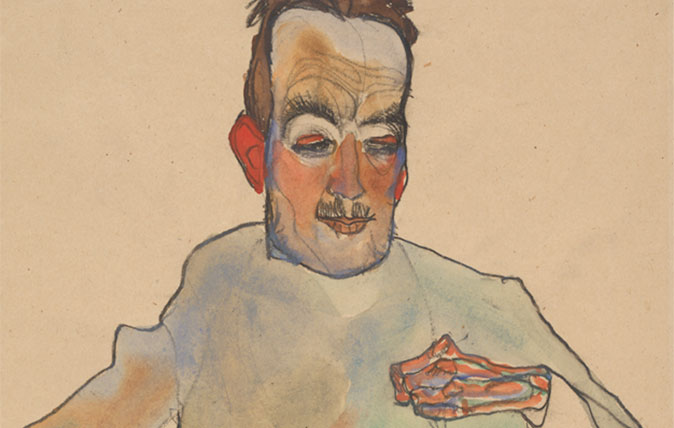My favourite painting: Sir David Hempleman-Adams
Industrialist and explorer Sir David Hempleman-Adams selects a beguiling Egon Schiele work.


Sir David Hempleman-Adams on his choice, 'Four Trees' by Egon Schiele
‘One of the great things about adventure and travelling to the four corners of the world is passing through major cities. I always get out of the airport and make a beeline for the art museums. Sadly, for me at least, Egon Schiele was always in the shadow of his compatriot Gustav Klimt. His life was short and contentious. His artwork is probably better known for his nudes, which at the time, and today, some would consider shocking.
'However, I love his maverick side and, for me, this is one of his best. I love the startlingly vibrant colours, leaping out of the frame. Art connoisseurs will uncover deep meanings in the composition and significance in the single bare tree, but my simple brain appreciates the sky, the rolling hills and the mountains in the distance. It sums up the beauty of Nature and all of its wonderful colours.’
Sir David Hempleman-Adams is an industrialist and an explorer. His next expedition will be the Torabhaig Atlantic Explorer in June 2024, the first crossing of the ocean in an open-basket hydrogen-gas balloon.
Charlotte Mullins on 'Four Trees'
Egon Schiele is best known for his brutal, angular portraits. He developed his distinctive linear style as he exhibited alongside Gustav Klimt at the Vienna Secession in Austria in the 1900s. Schiele painted the circle of critics, collectors and publishers who contributed to Austria’s burgeoning art scene in the years before the First World War, but he also created landscapes.
Four Trees was completed in 1917, the year before he died. A quartet of young trees grows on a rising ridge of grassland, the trees’ leaves broad like the hand-spans of horse chestnuts. They are silhouetted against a lurid red sun that colours the sky. Low-lying clouds in flat striated bands stretch horizontally across the canvas, countering the depth suggested by the distant blue mountains.
This painting doesn’t feature people; instead, Schiele has given the trees personalities of their own. A sturdy, straight-backed tree wiggles towards the light on the left, next to a pair of sickly saplings. A misshapen tree, which still seems in good health, grows next to another pair of conjoined trunks that together create a symmetrical canopy of leaves.
There’s a pervading sense of melancholy to Four Trees. The sun sets on new growth, perhaps indicating Schiele’s mood, for he said his paintings came ‘not from me, but out of me’.
The artist had enlisted two years before painting this, working in non-combative positions. He succumbed to Spanish flu in 1918, aged 28.

In Focus: A silent cellist, blazing with pleasure, by Klimt's great young protégé Schiele
When he first came on to the Vienna art scene, Egon Schiele hero-worshipped Gustav Klimt. Once they met the two
Exquisite houses, the beauty of Nature, and how to get the most from your life, straight to your inbox.

Jason Goodwin: The joy of a catalogue from the 'pornographers of herbage, greenery and legumes'
Our spectator columnist extols the wonders of the January gardening catalogues, relishing the chance to plan his fantasy garden from

Charlotte Mullins is an art critic, writer and broadcaster. Her latest book, The Art Isles: A 15,000 year story of art in the British Isles, will be published by Yale University Press in October 2025.